
With many thanks to my old American friend D. M. for her kind revision of the original manuscript.

------------------------------------------------
Contents
To see Introduction to Section 5, click here
Introduction
Section 1. Karl’s encounter with baumkuchen
Section 2. The path from Tsingtao to Japan during World War I
Section 3. The first exhibition of baumkuchen to the Japanese public
Section 4. A promising start in Japan
Section 5. Transitory success in Yokohama and a setback by the Great Kanto Earthquake
--------------------------------------------------
Section 6. Comeback in Kobe
Section 7. The seemingly irreversible blows of World War II
Epilogue
--------------------------------------------------------
Section 6. Comeback in Kobe
Karl and Elise decided to bake baumkuchen in Kobe. Karl borrowed 3000 yen (about 2 million yen in today’s currency) from a bank in Germany and from a Japanese reconstruction fund. Karl and Elise bought a three-story western-style building in San-nomiya, and slept in flour sacks on the second floor. Karl’s apprentices from Yokohama joined them to help him make a comeback.
The Kobe economy was booming during the 1920s, and competition between various foreign confectioneries was intensifying. Karl and his apprentices worked day and night to make outstanding baumkuchen. Karl often got angry and tearful over poorly made dough asking, “Why you can’t make better one?” and throwing unacceptable cakes away without mercy. He used to say, “Each customer eats a slice of baumkuchen. A true Meister must bake each slice with greatest care." They managed to open “Café Juchheim’s” on the first floor of the building in November, 1923. It was only two months after the great earthquake.
Karl’s baumkuchen was flying off the shelves. Karl said, “God probably decided what was delicious was delicious to everyone. Baumkuchen seems to be God to me.” Elise managed the café with honesty and sincerity. She opposed employees’ proposals for price increases by asking “Are you willing to buy it?” On the other hand, she was thoughtful and sent gifts to the employees on special occasions. She was particularly generous to children, allowing each boy or girl to choose a biscuit. This kindness to children was because of her sad memories of losing her parents in childhood and being brought up by relatives. An irresistible scene for her was a happy-looking family buying cakes for a young daughter in a neighborhood cake shop. The only thing she could do was to watch them from a distance. She often said, “We experienced great hardship during 5 years of Karl’s detention. Nothing was harder than that. Though we had hard time after the great quake, I am still standing.” However, greater hardship was waiting for her.
Section 7. The seemingly irreversible blows of World War II
Nazi Germany invaded Poland in 1939, and World War II broke out. Japanese naval aircraft made the massive raid on Pearl Harbor, Hawaii on December 8, 1941. The Juchheim’s son, Karlfranz, went to Europe to join the German army, and their Japanese apprentices were called up for military duty. As the complexion of the war was getting worse, people were forced to endure shortages and discomfort. It was not the time to enjoy eating baumkuchen. US forces conducted intensive air raids on Japanese cities using firebombs. Kobe was bombarded during March to June, 1945, and Karl’s building was burned to ashes.
The American B-29 bomber Enola Gay dropped the first atomic bomb on a civilian population in Hiroshima at 8:15 a.m. on August 6th in 1945. The Hiroshima Prefecture Industrial Promotion Hall where baumkuchen was introduced to the Japanese public was severely damaged. As stated previously, the ruin of this building remains standing as a memorial called Atomic Bomb Dome or, in Japanese, Genbaku Dome.
Karl became seriously ill during the way and just several hours before his death on August 14, 1945 predicted peace would soon be restored. The official end of the war in Japan was the very next day. In 1947, Elise was deported to Germany by occupation authorities. This was probably because of her service as vice deputy in the German Ladies’ association and because of the military service of Karlfranz. There she was informed of his death in Vienna in May 1945.
Epilogue
Karl’s apprentices managed to rebuild Juchheim Co., Ltd. in Kobe in 1950, and invited Elise back to Japan in 1953 to serve as chief executive. Just as before, she managed the company with honesty and sincerity. She died in 1971 at the age of 80. Karl and Elise are resting together in peace at the Ashiya Cemetery near Kobe. Juchheim Co., Ltd. is now one of the most popular confectionery companies in Japan.
This is the life story of a German couple who managed to survive two World Wars and the Great Kanto Earthquake. Being fascinated with baumkuchen, Karl adhered strictly to the traditional method as a Meister confectioner while Elise brought her honesty and sincerity to the management of their company, working with impressive thoughtfulness to make others happy.
Ironically, the introduction of baumkuchen and various other western cultures would likely have been delayed if World War I had not broken out. War is tragic without question, but the various humanitarian acts offered to victims of the Kanto Great Earthquake reflected the inherent good nature of humans.
Scenes of a devastated Yokohama make us think of more than a million of sufferers in Haiti who are in desperate need of food, water, clothing and shelter. Not everyone can go to Haiti to work at the site. However, small donations from individuals via the Red Cross, UNICEF, and various NGOs would be of significant help.
Lastly, I was amazed at the coincidence of the site of first exhibition of baumkuchen and the memorial site of the first atomic bombing. As posted previously in this weblog site, as an appeal for peace and the abolition of nuclear weapons at the Sendai Peace Tanabata festival, a citizen group is gathering paper cranes that they display in large ornaments each composed of tens of thousands of paper cranes. The festival is held August 6-8 each year. Paper cranes from overseas would be greatly appreciated even in small numbers. If you have not folded paper cranes before, refer to the following short movie and/or the set of scenes at consecutive stages of folding shown below.

Please start from 7.5 X 7.5 cm thin square paper, and send tightly folded forms (scene Q) to Mr. Shigeo Aburaya, c/o Sendai YMCA, 9-6 Tate-machi, Aobaku, Sendai Japan 980-0822.
To see Part I, click here
------------------------------------------------
Contents
To see Introduction to Section 5, click here
Introduction
Section 1. Karl’s encounter with baumkuchen
Section 2. The path from Tsingtao to Japan during World War I
Section 3. The first exhibition of baumkuchen to the Japanese public
Section 4. A promising start in Japan
Section 5. Transitory success in Yokohama and a setback by the Great Kanto Earthquake
--------------------------------------------------
Section 6. Comeback in Kobe
Section 7. The seemingly irreversible blows of World War II
Epilogue
--------------------------------------------------------
Section 6. Comeback in Kobe
Karl and Elise decided to bake baumkuchen in Kobe. Karl borrowed 3000 yen (about 2 million yen in today’s currency) from a bank in Germany and from a Japanese reconstruction fund. Karl and Elise bought a three-story western-style building in San-nomiya, and slept in flour sacks on the second floor. Karl’s apprentices from Yokohama joined them to help him make a comeback.
The Kobe economy was booming during the 1920s, and competition between various foreign confectioneries was intensifying. Karl and his apprentices worked day and night to make outstanding baumkuchen. Karl often got angry and tearful over poorly made dough asking, “Why you can’t make better one?” and throwing unacceptable cakes away without mercy. He used to say, “Each customer eats a slice of baumkuchen. A true Meister must bake each slice with greatest care." They managed to open “Café Juchheim’s” on the first floor of the building in November, 1923. It was only two months after the great earthquake.
Karl’s baumkuchen was flying off the shelves. Karl said, “God probably decided what was delicious was delicious to everyone. Baumkuchen seems to be God to me.” Elise managed the café with honesty and sincerity. She opposed employees’ proposals for price increases by asking “Are you willing to buy it?” On the other hand, she was thoughtful and sent gifts to the employees on special occasions. She was particularly generous to children, allowing each boy or girl to choose a biscuit. This kindness to children was because of her sad memories of losing her parents in childhood and being brought up by relatives. An irresistible scene for her was a happy-looking family buying cakes for a young daughter in a neighborhood cake shop. The only thing she could do was to watch them from a distance. She often said, “We experienced great hardship during 5 years of Karl’s detention. Nothing was harder than that. Though we had hard time after the great quake, I am still standing.” However, greater hardship was waiting for her.
Section 7. The seemingly irreversible blows of World War II
Nazi Germany invaded Poland in 1939, and World War II broke out. Japanese naval aircraft made the massive raid on Pearl Harbor, Hawaii on December 8, 1941. The Juchheim’s son, Karlfranz, went to Europe to join the German army, and their Japanese apprentices were called up for military duty. As the complexion of the war was getting worse, people were forced to endure shortages and discomfort. It was not the time to enjoy eating baumkuchen. US forces conducted intensive air raids on Japanese cities using firebombs. Kobe was bombarded during March to June, 1945, and Karl’s building was burned to ashes.
The American B-29 bomber Enola Gay dropped the first atomic bomb on a civilian population in Hiroshima at 8:15 a.m. on August 6th in 1945. The Hiroshima Prefecture Industrial Promotion Hall where baumkuchen was introduced to the Japanese public was severely damaged. As stated previously, the ruin of this building remains standing as a memorial called Atomic Bomb Dome or, in Japanese, Genbaku Dome.
Karl became seriously ill during the way and just several hours before his death on August 14, 1945 predicted peace would soon be restored. The official end of the war in Japan was the very next day. In 1947, Elise was deported to Germany by occupation authorities. This was probably because of her service as vice deputy in the German Ladies’ association and because of the military service of Karlfranz. There she was informed of his death in Vienna in May 1945.
Epilogue
Karl’s apprentices managed to rebuild Juchheim Co., Ltd. in Kobe in 1950, and invited Elise back to Japan in 1953 to serve as chief executive. Just as before, she managed the company with honesty and sincerity. She died in 1971 at the age of 80. Karl and Elise are resting together in peace at the Ashiya Cemetery near Kobe. Juchheim Co., Ltd. is now one of the most popular confectionery companies in Japan.
This is the life story of a German couple who managed to survive two World Wars and the Great Kanto Earthquake. Being fascinated with baumkuchen, Karl adhered strictly to the traditional method as a Meister confectioner while Elise brought her honesty and sincerity to the management of their company, working with impressive thoughtfulness to make others happy.
Ironically, the introduction of baumkuchen and various other western cultures would likely have been delayed if World War I had not broken out. War is tragic without question, but the various humanitarian acts offered to victims of the Kanto Great Earthquake reflected the inherent good nature of humans.
Scenes of a devastated Yokohama make us think of more than a million of sufferers in Haiti who are in desperate need of food, water, clothing and shelter. Not everyone can go to Haiti to work at the site. However, small donations from individuals via the Red Cross, UNICEF, and various NGOs would be of significant help.
Lastly, I was amazed at the coincidence of the site of first exhibition of baumkuchen and the memorial site of the first atomic bombing. As posted previously in this weblog site, as an appeal for peace and the abolition of nuclear weapons at the Sendai Peace Tanabata festival, a citizen group is gathering paper cranes that they display in large ornaments each composed of tens of thousands of paper cranes. The festival is held August 6-8 each year. Paper cranes from overseas would be greatly appreciated even in small numbers. If you have not folded paper cranes before, refer to the following short movie and/or the set of scenes at consecutive stages of folding shown below.

Please start from 7.5 X 7.5 cm thin square paper, and send tightly folded forms (scene Q) to Mr. Shigeo Aburaya, c/o Sendai YMCA, 9-6 Tate-machi, Aobaku, Sendai Japan 980-0822.
To see Part I, click here










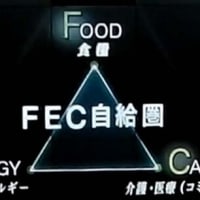



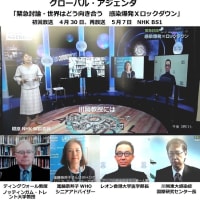
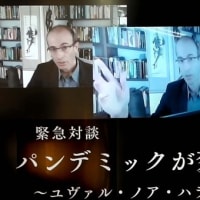
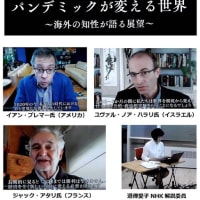
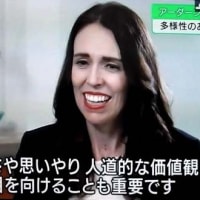









※コメント投稿者のブログIDはブログ作成者のみに通知されます